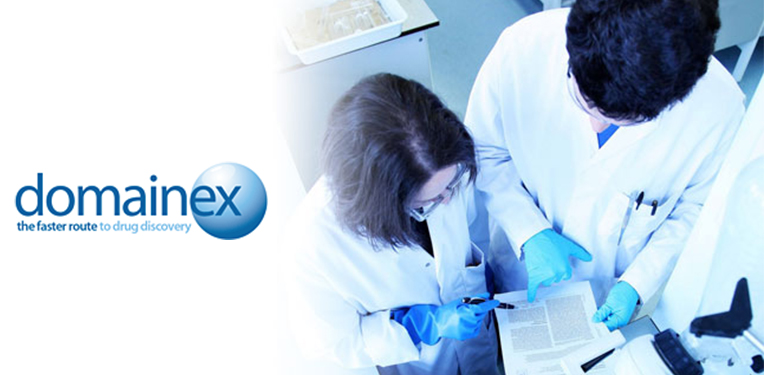4 things I learned from Eddy Littler, CEO of Domainex
Quality sites
- Online Casinos UK
- Casino Non Aams
- Casinos Not On Gamstop
- UK Casinos Not On Gamstop
- Best UK Casinos Not On Gamstop
- Casino Sites Not On Gamstop
- Casino Sites Not On Gamstop
- Casino Sites Not On Gamstop
- Non Gamstop Casino Sites UK
- Non Gamstop Casinos
- Best Online Casino Canada
- Casino Sites Not On Gamstop
- Non Gamstop Casino UK
- UK Online Casinos Not On Gamstop
- Best Slot Sites 2025
- Casinos Not On Gamstop
- Meilleur Casino En Ligne
- Non Gamstop Casinos
- Slots Not On Gamstop
- Non Gamstop Casino
- New Online Casinos Not Registered With Gamstop
- Casino Non Aams Sicuri
- Casino Sites UK Not On Gamstop
- Casino Non Aams Italia
- Bitcoin Casino
- Meilleur Site Casino En Ligne Belgique
- Casino App
- Migliori Siti Scommesse Non Aams
- Meilleur Casino En Ligne De France
- Nouveau Jeu Casino En Ligne
Biotech and Money recently had the opportunity to catch up with Eddy Littler, CEO of polymath biotech Domainex. With fingers in several academic pies, Domainex takes nurturing and funding the next wave of innovation as seriously as it takes its own technologies. But this should not detract from the quality of their own pipeline and procedures, as the structural biology methods they put to use are nothing short of state of the art, and the resulting drug candidate have many significant advantages over competitors’ efforts.
Here we learn a little more about what makes Domainex so special, why it helps to diversify and what the future holds for this exciting biotech.
1. Diversity is key
Domainex, in many ways, is like several different companies in one. Through this collaborative, hybrid approach, acting as both student and master, the company stays cutting edge in its discoveries and its technology.
“Domainex is distinct because we operate what we call a hybrid business model: we have a service division and our own internal pipeline. Many companies do something similar, but we’re a bit more transparent in what we do. The service business operates in a sort of drug discovery area: we go right from compound identification, through assay development, cell biology and biochemistry, through to hit finding. Elsewhere, we tend to dominate in the UK’s shall we say, academic or small biotech market, particularly in helping them obtain funding from organisations such as the Wellcome Trust.”
2. Invest in new talent
Harbouring established connections with the likes of Imperial College London and Queens University Belfast, Domainex know very well that innovations starts in academia. Domainex helps many promising concepts go through the dreaded ‘Valley of Death’.
“We will go around looking for projects in university groups who have very rich biology and understanding of a target involving a disease, but don’t have the wherewithal or knowhow to generate drug discovery on those targets. We find these groups and help them through the drug discovery process using our technology and knowhow. We have that package of their very rich biology plus our hits generated with them, we take that package with them, help them write the application.”
Domainex pursue this route of innovation seek because it is a classic win-win situation, where they gain talent and potential pipeline, universities gain funding, and large foundations like the Wellcome Trust fulfil their programmes’ aims.
“Basically it’s a win win. If they’re funded, we continue with the project and work with them as a service provider. The university then of course gets the funding to take their projects forward. There are several organisations as well as the Wellcome Trust, such as the British Heart Foundation who think in a similar way – they get a very good programme that fits in with their strategy. So it is, for once in this world, it’s one of those situations where everyone wins and gets what they wants.”
“Basically it’s a win win. If they’re funded, we continue with the project and work with them as a service provider. The university then of course gets the funding to take their projects forward. There are several organisations as well as the Wellcome Trust, such as the British Heart Foundation who think in a similar way – they get a very good programme that fits in with their strategy. So it is, for once in this world, it’s one of those situations where everyone wins and gets what they wants.”
3. UK-based IPO for long term building and services growth
Domainex want to initiate an IPO. We asked Eddy whether he was tempted by the lure of the US? Eddy has this response:
“We did ponder this, so we asked brokers. They told us that for the nature of Domainex – a hybrid business model with services generating revenues and growing the internal pipeline – our best fit would be with the UK market. Firstly the cost of listing in the USA is that much more, and secondly we want to use our funds to invest across the company. We want to invest some of the funds in the service business, and to grow the business both in terms of revenue and technology, whether organically or through M&A. This will give us the ability to choose when the right time is for doing a deal. We want to choose the timing much more, be much more in control of that process.”
4. Drugs start with modelling targets
All drugs are designed with respect to their targets. If you can work out the structure of a target protein, designing and producing a molecule to interact with it in the way you want is a piece of cake – at least in biotech terms. Using their combinatorial domain hunting (CDH) method, Domainex have been able to determine the molecular structures of several previously uncharacterisable proteins, effectively unlocking the door into a world of therapeutic potential. What’s more, Domainex are the only people out there who are using this approach.
“The rationale is, if you can’t express the whole full-length protein well, you can express a domain – a region of the protein that has some or all the biochemical properties of the full protein – and then this might be easier to use than the native protein. In terms of technology, we make these domains in such an efficient way, and there’s no real competition. The technology has now been patented and the patent has been granted worldwide”.
“The rationale is, if you can’t express the whole full-length protein well, you can express a domain – a region of the protein that has some or all the biochemical properties of the full protein – and then this might be easier to use than the native protein. In terms of technology, we make these domains in such an efficient way, and there’s no real competition. The technology has now been patented and the patent has been granted worldwide”.
The full interview with Eddy Littler will be published in the upcoming Drug & Dealers edition.





Leave a comment